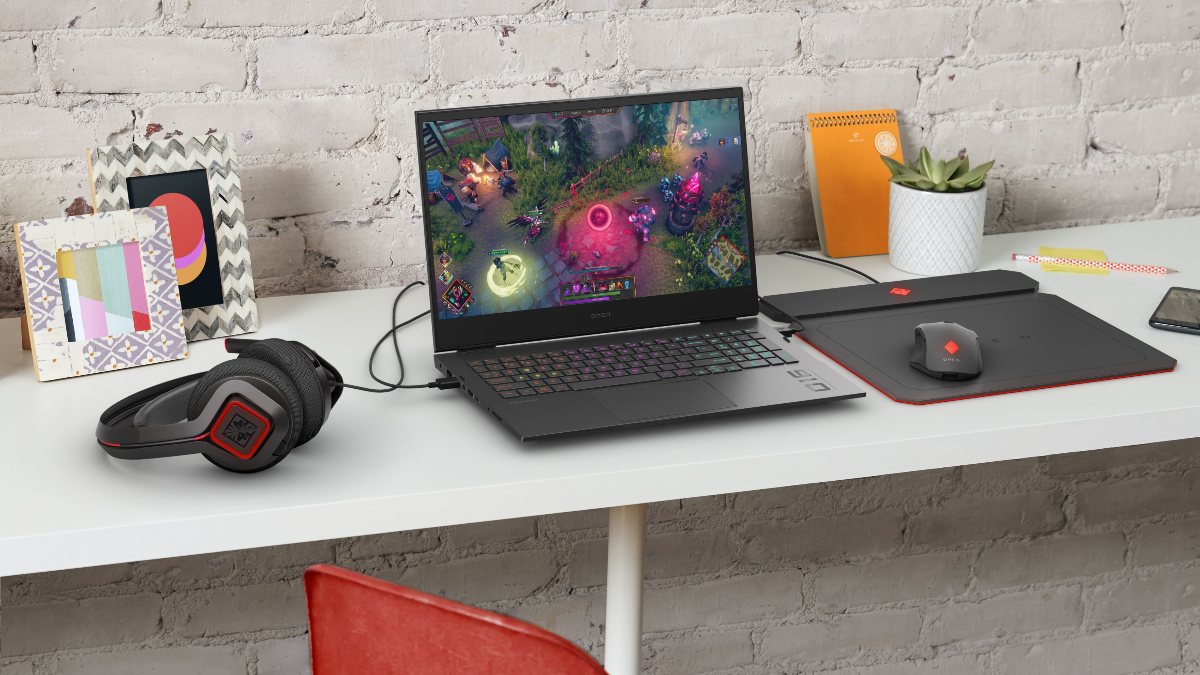HP Omen 16 (2022), Omen 17 (2022), Victus 15 (2022), and Victus 16 (2022) were launched in India on Thursday as the company’s latest gaming laptops. The laptops are powered by 12th-generation Intel Core and AMD Ryzen 6000 series processors. In addition to the new gaming laptops, HP introduced the Omen 45L, 40L, 25L, and Victus 15L desktops. The new Victus desktop comes in both Intel and AMD Ryzen options. The entire new range of HP gaming PCs and laptops come with Omen Gaming Hub that includes a range of customisations.
HP Omen 16 (2022), Omen 17 (2022), Victus 15 (2022), Victus 16 (2022) price in India
HP Omen 16 (2022) price in India starts at Rs. 1,09,999, and the laptop is available in a Shadow Black colour option. The HP Omen 17 (2022), on the other hand, starts at Rs. 1,99,999 and will go on sale from August. The HP Victus 15 (2022) will be available from July with a price starting at Rs. 67,999, while the Victus 16 (2022) is already available with an initial price tag of Rs. 84,999.
Alongside the laptops, the HP Omen 45L, Omen 40L, and Omen 25L desktops are available starting at Rs. 1,49,999. The Victus 15L desktop, however, is on sale at an initial price of Rs. 93,999.
In May, HP introduced the Omen 16 (2022) and Victus 15 (2022) in the US. The PC maker also unveiled its Omen and Victus gaming desktops at CES 2022 in January.
HP Omen 16 (2022) specifications
The HP Omen 16 (2022) features a 16.1-inch IPS display with a 16:9 aspect ratio and up to QHD resolution and 165Hz refresh rate. It is powered by up to a 12th-generation Intel Core i7-12700H or AMD Ryzen RX 6650M processor, along with Nvidia GeForce RTX 3080 Ti graphics, and 32GB of DDR5 RAM and up to 2TB PCIe SSD storage. The laptop also includes a keyboard with up to RGB lighting.
HP Omen 17 (2022) specifications
The HP Omen 17 (2022) also has specifications similar to that of the Omen 16 (2022), though it comes with a larger, 17.3-inch display.
HP Victus 15 (2022) specifications
The HP Victus 15 (2022) comes with a 15.6-inch display and is powered by up to a 12th-generation Intel Core i7 processor, with Nvidia RTX 3050Ti graphics. The laptop also includes a Temporal Noise Reduction (TNR) technology that is claimed to help reduce noise in videos.
HP Victus 16 (2022) specifications
The HP Victus 16 (2022) comes with a 16.1-inch display that has up to full-HD resolution and 144Hz refresh rate. The laptop also comes with Eyesafe low-blue light emission technology. Under the hood, it has up to an AMD Ryzen 7 6800H processor, along with up to an Nvidia GeForce RTX 3050Ti graphics and maximum 32GB of DDR5-4800MHz RAM. The laptop comes with a backlit keyboard with the memorable font that is available on Omen devices and integrated power button as well as calculator quick keys.
HP has provided wide rear vents along with four-way airflow and a two-heat pipe design on the Victus 16 (2022). The laptop packs up to 512GB of PCIe NVMe TLC SSD storage.
HP Omen 45L, Omen 40L, and 25L specifications
The HP Omen 45L, 40L, and 25L desktops come with up to Intel Core i7-12700K processor, along with up to Nvidia GeForce RTX 3080 graphics with 10GB dedicated memory. Specifically, the Omen 40L includes HyperX 32GB DDR4 RAM.
HP Omen 45L come with up to Intel Core i7-12700K processor
Photo Credit: HP
HP has designed the new desktops with an Omen CRYO Chamber that is claimed to harness ambient air and integrated fans to minimise overheating. Further, the desktops come with Omen Gaming Hub that enable overlocking to software-based fan control, BIOS access, and RAM frequency. The machines come with tempered glass panels and full metal body, tool-free entrance, and complete RGB control.
HP Victus 15L specifications
The HP Victus 15L is powered by an Intel Core i7-12700F processor, along with an Nvidia GeForce RTX 3060 Ti graphics with 8GB of dedicated graphics. The desktop also comes in an AMD Ryzen 7 5700G processor option. It includes a customisable RGB logo.
Check out our Latest News and Follow us at Facebook
Original Source

